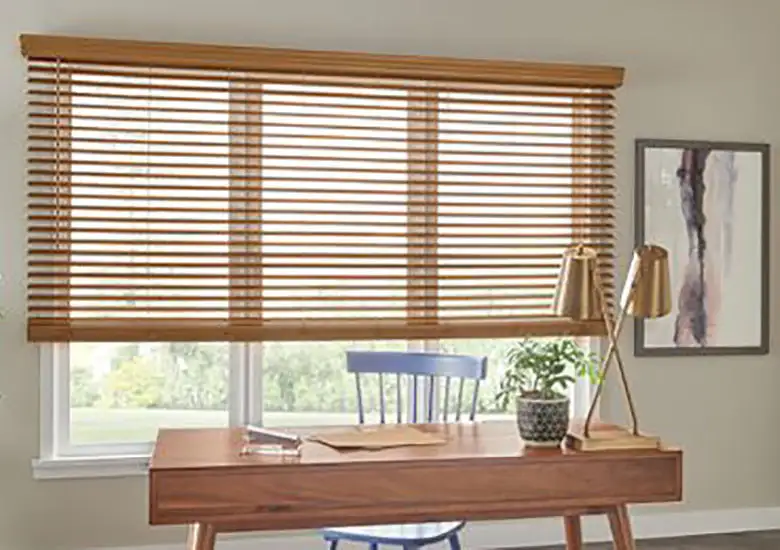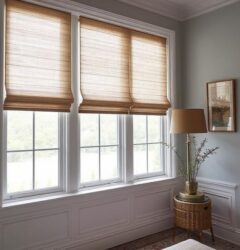Types of Window Blinds
Venetian Blinds
Horizontal slats, usually made of metal, wood, or plastic.
Can be tilted for light control and raised for a full view.
Vertical Blinds
Vertical slats (often fabric or vinyl) that rotate open or closed.
Common for large windows or sliding glass doors.
Roller Blinds
Fabric rolled onto a tube and pulled down to cover the window.
Simple, clean look.
Roman Blinds
Fabric that folds neatly as it’s raised.
More decorative, softens the look of a room.
Pleated or Cellular Shades (Honeycomb Blinds)
Made of pleated fabric that forms cells.
Good insulation and energy efficiency.
Mini Blinds
Like Venetian blinds but with thinner slats (usually aluminum).
Pros of Using Window Blinds
Light Control: You can adjust the angle of the slats.
Privacy: Great for bedrooms, bathrooms, etc.
Style Options: Available in many materials and colors.
Easy Maintenance: Most types are easy to clean with a duster or cloth.
Durability: Especially metal or faux wood types.
Cons
Dust Accumulation: Slats can collect dust.
Mechanical Issues: The cords or tilting mechanism can wear out.
Safety Hazard: Traditional corded blinds can be dangerous for small children and pets (many now offer cordless options).







